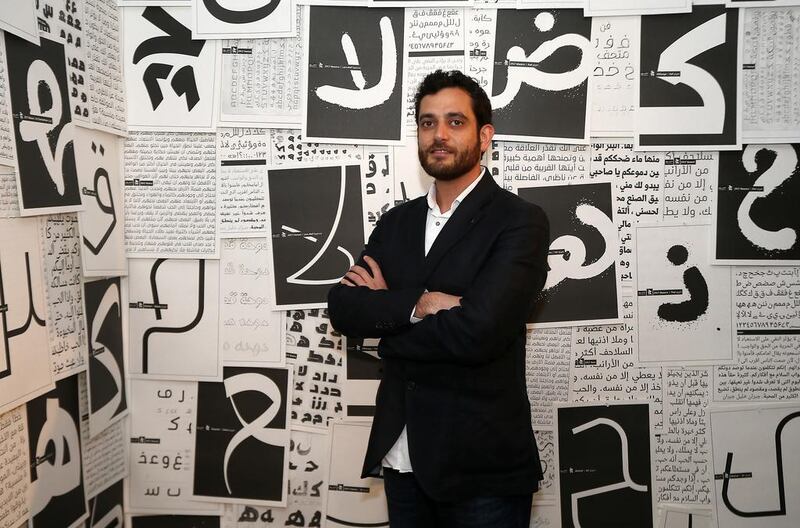This weekend, Pascal Zoghbi, a graphic designer and typographer who is one of 10 artists exhibiting in the Jameel Prize exhibition currently running at the Sharjah Museum of Islamic Civilization, is giving a masterclass in Arabic typography with 18 design students at American University of Sharjah. Zoghbi, who lives and works in Beirut, specializes in Arabic fonts and runs the 29 Letters Design Studio.
Ahead of his two-day workshop, which ends tomorrow, I caught up with him for a Q&A session.
Anna Seaman: Can you tell me a bit about this masterclass?
Pascal Zoghbi: The first stage is to give a talk about Arabic calligraphy in general. I will speak about all the scripts and how new fonts are derived from traditional ones. For the two-day workshop, we will focus only on the Kufic script. It is one of the oldest scripts and is also the most geometric and the easiest to work with at the beginning. I will ask the students to take one phrase from their vernacular environment and transform it into a contemporary abstract art piece.
AS: How do you, as a typographer and graphic designer, balance the rules of traditional calligraphy with the aesthetics of modern art?
PZ: There are three different schools of thought on this front. The first sticks as close as possible to the calligraphic script and just tries to revive it. The contrast to this is the people who go extremely experimental and don’t mind if they break all the rules. I believe I belong to the third school, which is inspired from the old forms but not stuck rigidly to it. I create new forms that have some sort of respect for the value of the script but at the same time they feel pure and contemporary. The feeling changes but the essence is not lost.
AS: Does calligraphy have a mathematical formula?
PZ: It is true that there are systems and rules within calligraphy but at the end of the day it is not mathematical – it is all visual and aesthetic. A good designer is a person who has an ability to look at a group of letters and draw the proper proportions to make them look balanced. It is not about maths; if you start measuring it will not work.
AS: What is your opinion of the fact that Arabic is disappearing as a language with the younger generation?
PZ: This is a problem with the education system in the Arab world – the curriculums are no longer taught in Arabic but in English or French. This means that the children do not learn about the value of the Arabic language. I also suffered from this when I was younger and it wasn’t until I was at university and studying design that I started to really discover its richness. It is a real shame. I think the problem is that the Arabic language did not evolve as other languages did.
AS: Do you think emerging designers look up to you and want to learn about the Arabic script through you?
PZ: Well, I am not a movie star. I am only known by a very small group of people and those people are already interested in design. Every time I begin teaching a group of typography students, almost all of them don’t want to work with Arabic and it is only by the end of the course that they start appreciating it.
AS: But now there is a new interest in digital typography, isn’t that right?
PZ: Yes, if you take it from a design perspective, now it is much better than it was before. There is more awareness and there are more typographers delivering new fonts and typefaces and there are more new Arabic fonts being used. This is the good part.
AS: Do you class yourself as an artist or a designer?
PZ: That was the question I was asked when I was accepted as part of the Jameel Prize exhibition. I don’t say I’m an artist, I say I’m a designer and specifically a type designer. My fonts are design products, which are supposed to be used. My work only exists when it is being used. If no one uses my fonts, my work is not present.
* For more info about Pascal Zoghbi and his work, visit his website: www.fonts.29lt.com





